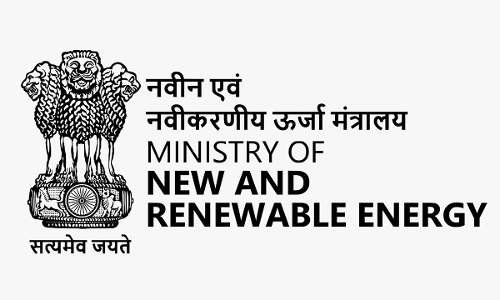New Delhi: Letters of Award have been issued under the PLI Scheme for the establishment of 48.3 GW of fully or partially integrated solar PV module manufacturing capacity, as announced by the Union Minister for New & Renewable Energy and Power.
The Union Minister for New & Renewable Energy and Power has shared information about the targets set under the National Solar Mission:
1. Creating an enabling policy framework for deploying 20,000 MW of solar power by 2022. This target was revised in 2015 to 1,00,000 MW of grid-connected solar power projects by 2022.
2. Promoting programs for off-grid applications, aiming for 2000 MW by 2022.
3. Deploying 20 million solar lights by 2022.
4. Achieving 20 million sq. meters of solar thermal collector area by 2022.
5. Creating favorable conditions for developing solar manufacturing capability in the country.
To meet the country’s energy demand, the Government has implemented various measures to increase the share of renewable energy. These measures include:
• Allowing Foreign Direct Investment (FDI) up to 100 percent under the automatic route.
• Waiving Inter-State Transmission System (ISTS) charges for inter-state sale of solar and wind power for projects commissioned by June 30, 2025.
• Declaring a trajectory for Renewable Purchase Obligation (RPO) up to the year 2029-30.
• Establishing new transmission lines and sub-station capacity under the Green Energy Corridor Scheme for renewable power evacuation.
• Notifying standards for deploying solar photovoltaic systems/devices.
• Establishing a Project Development Cell for attracting and facilitating investments.
• Issuing Standard Bidding Guidelines for tariff-based competitive bidding in the procurement of power from Grid Connected Solar PV and Wind Projects.
• Ensuring power dispatch against Letter of Credit (LC) or advance payment for timely payments by distribution licensees to RE generators.
• Notifying the Promotion of Renewable Energy through Green Energy Open Access Rules 2022.
• Notifying “The Electricity (Late Payment Surcharge and related matters) Rules (LPS rules).”
• Launching the Green Term Ahead Market (GTAM) to facilitate the sale of Renewable Energy Power through exchanges.
• Approving the National Green Hydrogen Mission to make India a global hub for green hydrogen production, utilization, and export.
• Notifying a prescribed trajectory for RE power bids to be issued by Renewable Energy Implementation Agencies from FY 2023-24 to FY 2027-28, with a target of issuing 50 GW/annum of RE bids.
Additionally, various schemes have been issued to promote renewable energy, including:
Ongoing Major Renewable Energy Schemes / Programmes:
1. Scheme for Development of Solar Parks and Ultra-mega Solar Power Projects: Targeting the setup of 40,000 MW capacity to expedite the development of utility-scale solar projects.
2. Central Public Sector Undertaking (CPSU) Scheme Phase-II (Government Producer Scheme): Aiming to establish 12,000 MW grid-connected Solar Photovoltaic (PV) Power Projects with Viability Gap Funding (VGF) support.
3. Production Linked Incentive scheme ‘National Programme on High Efficiency Solar PV Modules’: Geared towards achieving giga-watt (GW) scale manufacturing capacity in High-Efficiency Solar PV modules.
4. PM-KUSUM Scheme: To promote small Grid Connected Solar Energy Power Plants, stand-alone solar-powered agricultural pumps, and solarization of existing grid-connected agricultural pumps.
5. Rooftop Solar Programme Phase II: Offering subsidies for residential sector rooftop solar power plants and performance-linked incentives to DISCOMs for capacity addition.
6. Green Energy Corridors (GEC): Establishing intra-state transmission systems for renewable energy projects, with Central Financial Assistance (CFA) in ten States.
(i) Intra-State Transmission System Green Energy Corridor Phase-I
(ii) Intra-State Transmission System Green Energy Corridor Phase-II
7. Bio-Energy Programme: Encompassing Waste to Energy, Biomass Programme, and Biogas Programme.
8. Renewable Energy Research and Technology Development (RE-RTD) Programme: Supporting short-term training, skill development programs, fellowships, internships, and lab upgradation for RE and renewable energy.
9. National Green Hydrogen Mission: Launched with an outlay of Rs. 19,744 crore to make India a Global Hub for green hydrogen production, utilization, and export.
Furthermore, to ensure optimal capacity utilization of coal-based power plants, the Ministry of Power, through a letter dated 20.02.2023, issued directions under Section 11 of the Electricity Act, 2003, to Imported Coal-Based (ICB) generating companies, directing them to operate and generate power at their full capacity.
As of November 30, 2023, the installed solar capacity in the country is approximately 72.31 GW, including 58.53 GW from ground-mounted solar projects, 11.08 GW from rooftop solar capacity, and 2.70 GW from off-grid solar capacity, which includes 11.12 million solar lights. The solar thermal collector area installed till 2016-17 was around 11 million square meters. The current domestic solar PV module manufacturing capacity, as listed in MNRE’s Approved List of Models and Manufacturers (ALMM), is approximately 22 GW per annum. Additionally, the Government has launched the Production Linked Incentive (PLI) Scheme for High-Efficiency Solar PV Modules, and under this scheme, Letters of Award have been issued for setting up around 48.3 GW of fully/partially integrated solar PV module manufacturing capacity in the country.
This information was provided by the Union Minister for New & Renewable Energy and Power, Shri R. K. Singh, in a written reply to a question in Lok Sabha on December 21, 2023.


